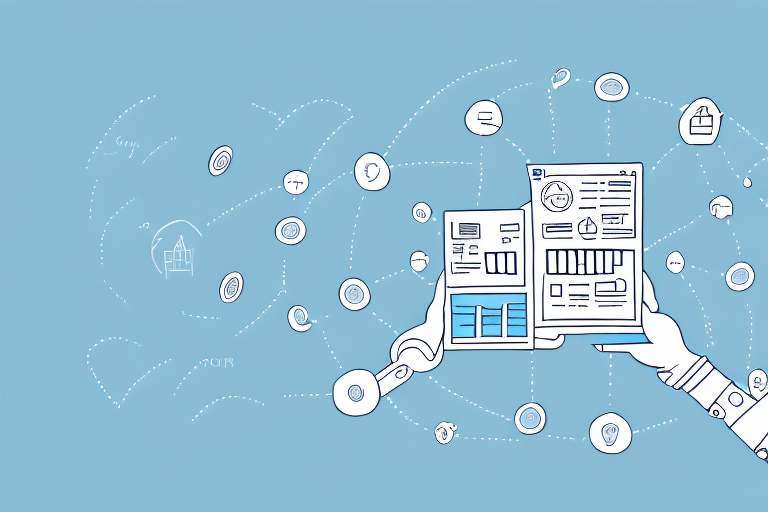The Essential Guide to Logistics Planning
Logistics planning is a cornerstone of successful business operations, especially for companies involved in the transportation of goods or services. It ensures the seamless movement of products from their origin to the desired destination in a cost-effective and timely manner. Effective logistics planning not only enhances operational efficiency but also strengthens customer satisfaction and maintains a competitive edge in the market. This guide delves into the key components of logistics planning, provides practical tips and best practices, and explores future trends shaping the logistics industry.
Why Logistics Planning Matters
Logistics planning significantly impacts various facets of a business, including profitability, customer satisfaction, and competitive advantage. A well-structured logistics strategy can:
- Reduce transportation costs
- Optimize inventory levels
- Ensure timely delivery of products
- Enhance supply chain resilience
Conversely, ineffective logistics can lead to delays, excess inventory, and lost sales. Moreover, robust logistics planning enables businesses to swiftly adapt to changing market conditions and manage supply chain risks effectively.
One of the primary benefits of logistics planning is the identification and elimination of inefficiencies within the supply chain. By analyzing transportation routes, inventory levels, and delivery schedules, businesses can streamline operations, thereby reducing costs and improving their bottom line.
Additionally, effective logistics planning equips businesses to respond promptly to unforeseen events such as natural disasters, labor strikes, or sudden demand surges. Having contingency plans and the ability to adapt quickly ensures continuity in operations and maintains the reputation for reliability and excellent customer service.
Key Components of Logistics Planning
Transportation Management
Transportation is a critical component of logistics planning. It involves selecting the most efficient mode of transport, determining optimal routes, and choosing reliable carriers. Effective transportation management can lead to significant cost savings and improved delivery times.
Inventory Management
Inventory management oversees the availability, location, and movement of stock. Proper inventory management ensures that businesses maintain the right balance between having sufficient stock to meet demand and minimizing excess inventory that can lead to increased holding costs.
Procurement and Supplier Management
Procurement involves sourcing suppliers and negotiating contracts. Building strong relationships with suppliers ensures a reliable supply of goods and services, which is essential for maintaining smooth logistics operations.
Supply Chain Management
Supply chain management encompasses the entire logistics process from start to finish. It involves coordinating all activities involved in the production and distribution of goods to ensure timely and efficient delivery to customers.
Demand Planning
Demand planning involves forecasting future demand for products and ensuring that the necessary resources are in place to meet that demand. Accurate demand forecasting helps businesses avoid stockouts and overstocking, thereby reducing costs and maximizing sales.
Technology Integration
Integrating advanced technologies such as analytics, automation, and artificial intelligence into logistics planning can optimize processes, reduce errors, and enhance overall efficiency. For example, predictive analytics can forecast demand trends, while automation streamlines repetitive tasks.
Data Analysis and Information Management
Effective logistics planning relies heavily on the collection and analysis of data. Businesses must gather historical data on transportation costs, customer demand patterns, and supply chain bottlenecks to identify opportunities for improvement.
Utilizing Data for Decision Making
Analyzing data enables businesses to make informed decisions regarding route optimization, carrier selection, and inventory levels. Data-driven decision-making ensures that logistics strategies are based on accurate and relevant information.
Sustainability and Environmental Impact
Considering the environmental impact of logistics operations is increasingly important. Analyzing the carbon footprint and implementing sustainable practices such as using alternative fuels, optimizing delivery routes, and reducing packaging waste can enhance brand reputation and attract environmentally conscious customers.
Technology in Modern Logistics
Technology plays a pivotal role in transforming logistics management. Advanced tools and systems enable businesses to automate processes, track shipments in real-time, and analyze large datasets for better decision-making.
Transportation Management Systems (TMS)
TMS software helps businesses plan, execute, and optimize the physical movement of goods. It provides visibility into transportation operations, aiding in route optimization and carrier performance monitoring.
Warehouse Management Systems (WMS)
WMS software manages warehouse operations, including inventory tracking, order fulfillment, and space optimization. Efficient warehouse management reduces handling costs and improves order accuracy.
Artificial Intelligence and Machine Learning
AI and machine learning technologies enable predictive analytics, which can forecast demand, detect potential disruptions, and suggest optimal logistics strategies. These technologies enhance the ability to anticipate and respond to market changes proactively.
Best Practices in Logistics Planning
Implementing best practices in logistics planning can lead to significant improvements in efficiency and cost savings. Key best practices include:
- Leverage Technology: Utilize advanced software and automation tools to streamline logistics processes.
- Analyze Data: Continuously collect and analyze data to identify trends and opportunities for optimization.
- Collaborate with Partners: Foster strong relationships with suppliers, carriers, and other stakeholders to ensure smooth operations.
- Continuous Improvement: Regularly review and refine logistics strategies to adapt to changing business needs and market conditions.
- Clear Communication: Establish transparent communication channels within the supply chain to prevent misunderstandings and delays.
Adhering to these best practices ensures that logistics planning remains effective and aligned with overall business objectives.
Future Trends in Logistics Planning
The logistics industry is continually evolving, driven by technological advancements and changing market dynamics. Staying abreast of future trends is essential for businesses to remain competitive and adapt to new challenges.
Autonomous Vehicles and Drones
The adoption of autonomous vehicles and drones is set to revolutionize transportation and delivery services. These technologies promise increased efficiency, reduced labor costs, and faster delivery times.
Sustainable Logistics
Environmental sustainability is becoming a major focus in logistics planning. Businesses are increasingly adopting green practices, such as using electric vehicles, optimizing routes to reduce emissions, and implementing eco-friendly packaging solutions.
Advanced Data Analytics
The role of data analytics in logistics management will continue to expand. Advanced analytics tools will provide deeper insights into supply chain performance, enabling more accurate demand forecasting and proactive risk management.
Blockchain Technology
Blockchain technology offers enhanced transparency and security in supply chain transactions. By providing a tamper-proof ledger of all transactions, blockchain can improve traceability and reduce fraud in logistics operations.
Internet of Things (IoT)
IoT devices enable real-time tracking and monitoring of goods throughout the supply chain. This connectivity improves visibility, enhances inventory management, and facilitates predictive maintenance of logistics equipment.
Measuring Logistics Performance: Key KPIs
Monitoring key performance indicators (KPIs) is essential for assessing the effectiveness of logistics planning and identifying areas for improvement. Important KPIs include:
Transportation Costs
Tracking transportation costs helps businesses identify opportunities for cost savings and ensure efficient use of resources.
On-Time Delivery Rates
Measuring the percentage of deliveries made on time is a critical indicator of logistics performance and customer satisfaction.
Inventory Turnover
Inventory turnover rates indicate how efficiently inventory is being managed. High turnover rates suggest effective inventory management, while low rates may point to overstocking issues.
Order Accuracy
Monitoring the accuracy of order fulfillment ensures that customers receive the correct products in the right quantities, enhancing satisfaction and reducing returns.
Supply Chain Cycle Time
Measuring the total time taken to fulfill customer orders from order placement to delivery helps identify bottlenecks and improve overall supply chain efficiency.
By regularly tracking and analyzing these KPIs, businesses can continuously refine their logistics strategies to achieve better results and align with their business goals.
Avoiding Common Pitfalls in Logistics Planning
Logistics planning can be fraught with challenges that may hinder its effectiveness. Awareness and proactive management of common pitfalls can help businesses design and implement more resilient logistics strategies. Common pitfalls include:
- Ignoring Market Conditions: Failing to analyze and adapt to changing market trends can lead to ineffective logistics planning.
- Over-Reliance on a Single Transport Mode or Supplier: Dependence on one transportation method or supplier increases vulnerability to disruptions.
- Neglecting Performance Monitoring: Without regular monitoring of logistics performance, businesses cannot identify and address inefficiencies.
- Inadequate Risk Management: Not having contingency plans in place can leave businesses unprepared for unexpected disruptions.
By addressing these pitfalls, businesses can create more effective and adaptable logistics plans that support sustained growth and operational excellence.
Conclusion
Logistics planning is an indispensable element of any business that involves the transportation of goods or services. It requires a comprehensive understanding of various components such as transportation management, inventory control, procurement, and supply chain management. By leveraging advanced technologies, analyzing data meticulously, and adhering to best practices, businesses can develop robust logistics plans that enhance efficiency, reduce costs, and improve customer satisfaction.
Moreover, staying informed about emerging trends and future developments in the logistics industry ensures that businesses remain competitive and capable of adapting to evolving market demands. Effective logistics planning not only supports current business operations but also lays the foundation for future growth and success.
For more insights and detailed strategies on optimizing your logistics planning, consider exploring resources from reputable sources such as the Supply Chain Digital and the APICS (Association for Supply Chain Management).




















